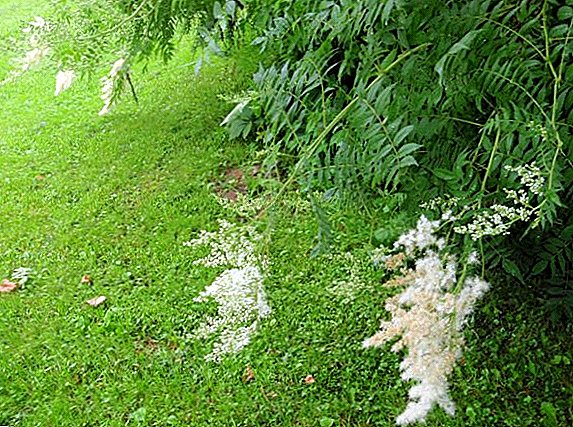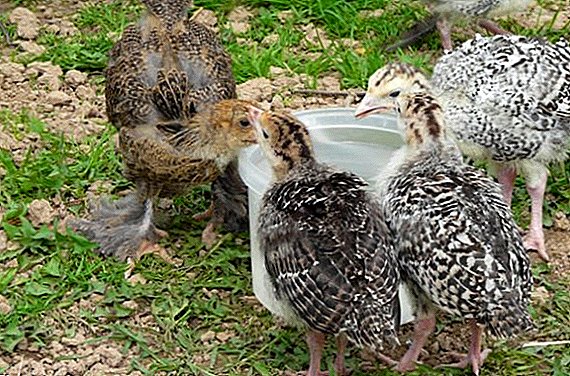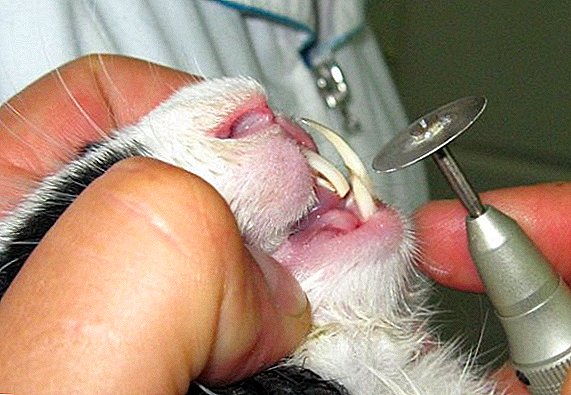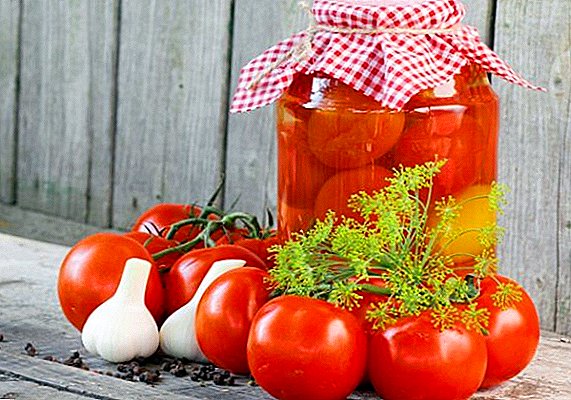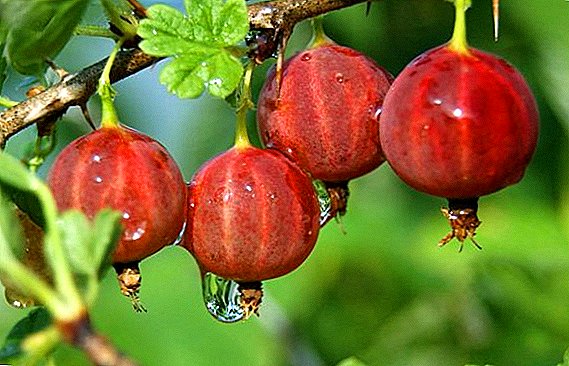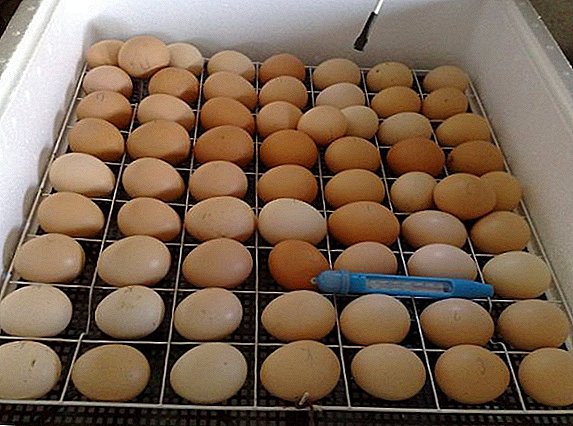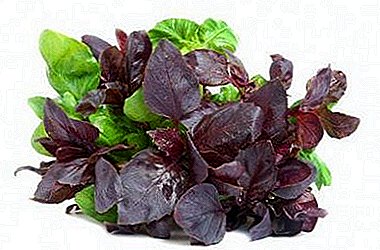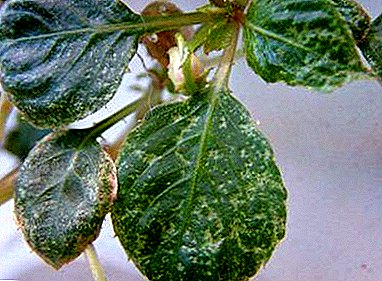
Balsam (Vanka wet, Impatiens) - one of the most popular plants among gardeners. But he has one drawback: he is predisposed to infection with spider mites. This is a rather insidious pest that can cause irreparable harm not only to the balsamic, but also to the plants nearby.
The parasite feeds on the sap of the flower, actively propagates and is small enough to be found. This is precisely its danger. If you find the parasite in time, the plant can be saved, but everything is in order ... What is this pest? How to deal with it? How to prevent its occurrence? This article will answer all these questions.
Spider mite is a member of the family of spider-like arthropods of the order thrombithiformis, is one of the most common of the tick family. It is a soft-bodied representative of an ellipsoidal shape with a convex upper and even lower body. Its coloring depends on many factors: most often spider mites are yellowish, brownish, greenish in color. The size of ticks: the length of the females is from about 0.4 to 1 mm, the male - from 0.3 to 0.45 mm.
This pest multiplies very quickly: after 10 - 20 days from the moment of laying eggs, the individuals are considered adults. In the web, woven by ticks, live for several generations. Their colonies are located under fallen leaves in a pot, under clods of earth, on the back of a leaf, on a frame and a window sill. Often, the pest can only hit a flower bought from a store, so do not forget about the two-week quarantine.
Important! In order to prevent spider mite damage of any plant, including balsam, it is recommended to disinfect it before planting it in a pot: wipe the soil with fungicides or thermally, wipe the container and tools with alcohol or a solution of potassium permanganate.
Spider mites feed on balsam cell contents: an adult individual bites off its part, and through the hole made it drinks out all the juice. As a result of such vital activity, a part of the cells is destroyed, and the intensity of photosynthesis decreases. In addition, spider mites can infect any member of the flora with incurable viral infections and gray rot spores.
How to identify?
Balsam - one of the favorite delicacies of spider mites, its green leaves and succulent stems attract the pest first of all flowers.
This parasite is very difficult to detect. Most often, the grower begins to fight the pest at a time when the plant is already badly damaged. The main symptom of the presence of spider mites on balsam is the presence of black small dots on the leaves (traces of bites) and the presence of the thinnest film - cobwebs.
With a strong lesion the leaves turn white, the flower is wrapped in cobwebs, and at the tips of its leaves one can see an accumulation of moving bodies of pests. At the last stage, the balsam loses its leaves and flowers without generating new ones.
With the naked eye to detect this pest on the pet will not work: too shallow, and their color coincides with the color of the leaves. You can only see the female: she is larger than the male, and she is red.
A photo
Here you can see photos of the plant:



Why appear on a flower?
The main factor provoking the emergence of a spider mite is inadequate conditions for balsam. This pest feels great in dry and hot weather. Ticks attack primarily those plants that lack less moisture.
Possible consequences
A plant affected by a spider mite looks like it was doused with boiling water: the stem is red-gray in color, dried leaves and flowers, which are gradually discharged (why balsam can also throw off its buds and flowers, it is described here). The final result is the death of the balsam. But other representatives of the flora, especially those in the vicinity of the affected flower, are at risk (fuchsias, roses, hibiscus). Parasites multiply very quickly and can almost hit almost all plants.
How to fight and what to do if you could not get rid of?
It is very difficult to bring out a spider mite, and here it is necessary to approach the issue in a comprehensive way:
- When this pest is detected, the plant must be thoroughly washed with water and tar or household soap.
- Lather the plant covered with a plastic bag and leave for a day.
- After the time, the soap must be washed under a warm shower.
- Such treatment must be subjected to all plants in the vicinity of the affected balsamine.
- It is also important to wash the window sill, the frame with hot water with any detergent.
- If the measures taken did not give the desired result, then the flower must be treated with special chemicals.
Ticks are not insects, but spiders. Therefore, insecticides will not be able to help. In the fight against spider mite, you must use acaricides.
Of the most common acaricides, effective help will be:
- "Fitoverm" - biological product, the use of which is allowed in the room. It is safe for humans and animals. 0.5 ml of the preparation is diluted in 0.5 l of warm water, then the resulting liquid is poured into 5 l of water, this solution should be sprayed with balsamine up to three times, observing the intervals between irrigations in 3 to 7 days. If a positive effect is not observed, then "Fitoverm" should be changed to another acaricide.
- Akktelik - A drug that infects ticks by penetrating through the respiratory organs. 2 ml of the substance is dissolved in 2 liters of water. It is possible to spray a plant only 1 time.
- "Apollo" - the action of the drug is aimed at the destruction of tick eggs. Dissolve 2 ml of the substance in 5 l of cold water.
- "Sunmite" - 1 g of the powder is diluted in a small amount of water, and then in 1 liter of water.
- "Antikleshch" - it is necessary to dissolve 10 ml of the product in 10 l of cold water.
All the listed drugs, except for "Fitoverma", are toxic and dangerous. for humans and animals. Therefore, processing plants must be carried out in special clothes outside the premises.
Attention! If none of the methods destroyed the mite, then the balsam must be eliminated: the risk of infestation from other plants is too great.
Prevention
The main preventive measures include:
- Placement on a two-week quarantine of purchased or brought plants.
- Disinfection of soil, pot, instruments during balsam transplantation.
- Systematic inspection of all colors for pests.
- Regular watering and irrigation Vanya wet.
- Systematic airing of a plant in the fresh air.
- Timely removal of affected plant parts, as well as dried leaves and flowers.
- 1 time in 3 months it is necessary to spray the Touch up with the Fitoverma solution (2 ml per 1 l of water).

One of the popular folk ways to solve this problem is the following: it is necessary to pour plenty of water and cover the bush with a plastic bag for 2 to 3 days. It is believed that a wet environment will kill all harmful individuals. It is important not to allow direct sunlight on the leaves to avoid burns, and the whole flower can simply be “cooked” in a similar environment.
- Why balsam does not bloom and what to do about it?
- What causes balsam leaves to turn yellow and how to reanimate it?
It is much easier to prevent the appearance of spider mites than to save a plant from it. It is imperative to observe all precautions, as well as provide the balsam with the conditions in which he feels comfortable. Otherwise, the risk of losing your favorite plant due to pests and diseases becomes too great.


